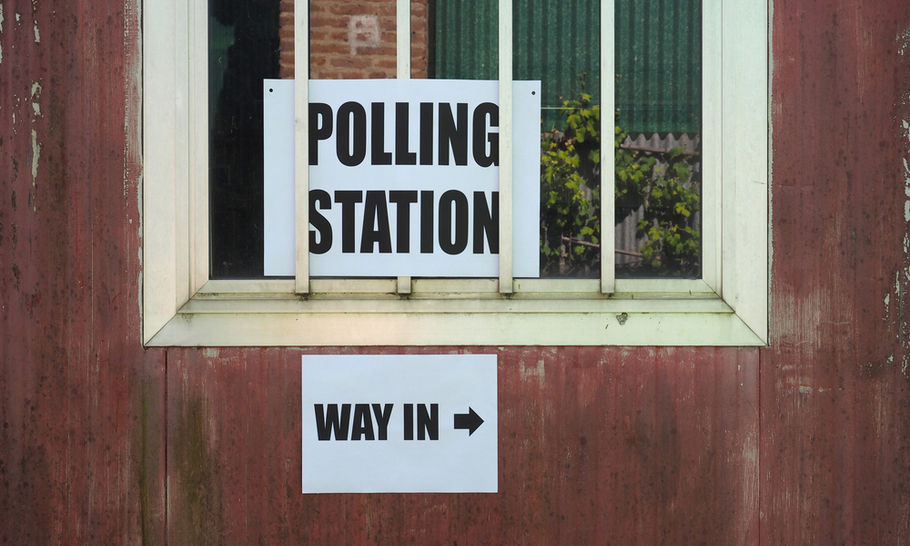The 2019 General Election battlegrounds: a profile

Here’s a strange paradox: the louder Boris shouts that he won’t call a General Election any time soon, the shorter the odds get on a General Election happening very soon indeed. If you went to the bookies today and put a tenner on a 2019 GE, you’d make just 50p if it took place.
Why? Well, partly, of course, Boris has an incentive to be flexible with the truth. His colleagues – still scarred from the memories of 2017 – are terrified of going to the country, and the new Prime Minister is on a mission to get as many of them as possible on his side. His best bet, many believe, is to talk down the possibility of an election and wait until he is forced into one in early autumn. Tory MPs might resent him for risking their jobs for the sake of a vanity project (“personal mandate”), but if he can prove that Parliament is standing in the way of his Brexit plan, they may be more sympathetic. If he can also use the delay to start quietly whipping up support around the country – and he’s acting like a man on a mission to do just that – then so much the better.
But even those who don’t buy into this narrative think an election could well be on the way. Given that dissatisfaction in the Gaukward squad is close to boiling point, Boris doesn’t necessarily have the final say on what happens next. If bright eyed and bushy tailed Jo Swinson, fresh from a by-election victory (see below) tables a no confidence vote which is then supported by Philip Hammond et al, we could be facing an autumn General Election whether the new PM likes it or not.
So, when the inevitable happens, where will the battles be fought? And how will they play out? The six constituencies profiled below give some indication of what Boris Johnson will be up against.
Brecon and Radnorshire (Conservative majority: 8033)
The eyes of all Westminster have turned to the lush hills of Brecon and Radnorshire this week, where sheep outnumber people two to one. Why? Because tomorrow’s by-election in the rural, Welsh constituency will be the first electoral test for both Boris Johnson and Jo Swinson – and given the government’s wafer-thin majority in the House of Commons, there’s a lot at stake.
The Conservatives are defending a big majority in the constituency (of just over 8,000), but their candidate, Chris Davies, is far from popular: he was unseated after 19 per cent of Brecon’s voters signed a recall petition following his conviction for a false expenses claim. And the Liberal Democrats, who held the seat until it fell to the Conservatives in 2015, are seeking to capitalise. Their new leader, Jo Swinson, will be keen to make an immediate impact – and is being supported by two other anti-Brexit parties (Plaid Cymru and the Greens) who have agreed not to stand this time to give the Lib Dems a better chance of winning.
The constituency voted for Leave by 53 per cent in the referendum, and shows no signs of softening its stance. But the Lib Dems don’t seem to see that as a problem: their election literature makes no mention of the referendum, or of Brexit, and focuses almost entirely on local issues.
Having avoided campaigning in the seat so far, Boris made a last minute dash there yesterday – which many are interpreting as a sign that he no longer considers it a lost cause. Is he right?
Oxford West and Abingdon – (Liberal Democrat majority: 816)
An affluent, educated corner of south-west England, Oxford West and Abingdon is a natural battleground for the Tories and Liberal Democrats. In 2015, Tory Nicola Blackwood held onto the seat with a majority of 10,000+, but just two years later she lost it to Lib Dem Layla Moran. Winning it back will be a tough slog: it’s not as heavily pro-Remain as parts of London (estimates suggest Remain won with 61 per cent of the vote), but it’s the home of dozens of entrepreneurs and small business owners – not to mention students – many of whom are deeply worried about the effects of Brexit. The Tories best hope here is to lay off the Brexit talk, and go heavy on traditional Conservative messages: an energetic campaign focusing on aspiration, business, and low taxes would definitely make Moran twitchy.
Chipping Barnet – (Conservative majority: 353)
This leafy London suburb has been held by a Conservative since its creation for the February 1974 general election, withstanding even the Labour landslide in 1997. In 2017, however, the Corbynmania which swept the capital crept north, and incumbent Theresa Villiers – now the new DEFRA Secretary – only clung on by the tips of her fingers.
But here, at least, the Tories can expect a big swing their way: there are 54,084 Jews living in Barnet (accounting for one in five of all Jews in England and Wales) – and they have been leaving the Labour Party in their droves.
The question for the Conservatives, though, is when it comes to an election, will it only be Jews who are prepared to punish the Leader of the Opposition for the rampant anti-Semitism in his Party? If so (given the concentration of the Jewish population), Theresa Villiers may get her healthy majority back in Chipping Barnet – but in the rest of the country, sheepish Labour voters who just “like the local MP” could end up putting Jeremy Corbyn in Downing Street.
Battersea (Labour majority: 2416)
The middle-class, millennial graduates who make up the vast majority of Battersea (one of the youngest constituencies in the country) are optimistic, entrepreneurial, and, although not usually politically active, normally sway towards free market Conservatives come election time. But in 2017, they didn’t. Why? Brexit is the reason normally trotted out (Battersea had the second highest Remain vote in the country), but there was another factor.
From Winston Churchill to Margaret Thatcher and then David Cameron, Conservative leaders have invoked the ladder metaphor come election time: and it worked. For young people working long hours in their first jobs in places like Battersea, the state as a provider of support on the way up is a far more attractive idea than the state as a net to catch you when you fall. But Theresa May, obsessing over middle-aged, rural, “Just About Managings” and “left behinds”, spoke only of struggle in 2017, and forgot – it seems – to mention opportunity.
Winning back liberal, pro-Remain Battersea will be a challenge for Boris. But if he continues to talk about the virtues of the free market, “peddles optimism”, and proves that he – unlike his predecessor – is pro-immigration, he might well succeed.
Stoke-on-Trent South (Conservative majority: 663)
An industrial, working class, Northern constituency, Stoke-on-Trent South was a big win for the Tories in 2017. Though elsewhere in the Labour heartlands May’s party only managed to make dents in Labour majorities, in Stoke-on-Trent South the “citizens of nowhere” messaging actually paid off.
But Boris won’t be feeling complacent about this particular seat. Farage and the Brexit Party will be pumping masses of resources into the area (which voted 72 per cent in favour of Leave), and the Tory vote simply can’t afford to be split. What’s more, where hard-grafting, down to earth Theresa May went down well here, a florid, old Etonian show-off may not have the same appeal.
Stirling (Conservative majority: 141)
As we discovered this week, Boris Johnson and Ruth Davidson are not getting on well. And Stirling proves exactly why. The central Scotland, ultra marginal constituency voted to remain in the EU by 69 per cent in 2016, but thanks, presumably, to Ruth Davidson, it returned a Tory MP the year later anyway. Now, Davidson is understandably getting nervous: by bouncing around the country shouting about No Deal, she’s worried that the new Prime Minister is sending the people of Stirling right back into the open arms of Nicola Sturgeon.
If Boris is to hold onto Stirling, and, for that matter, the other 12 seats the Tories hold in Scotland, he’s going to have to work something out with Davidson – and fast.





